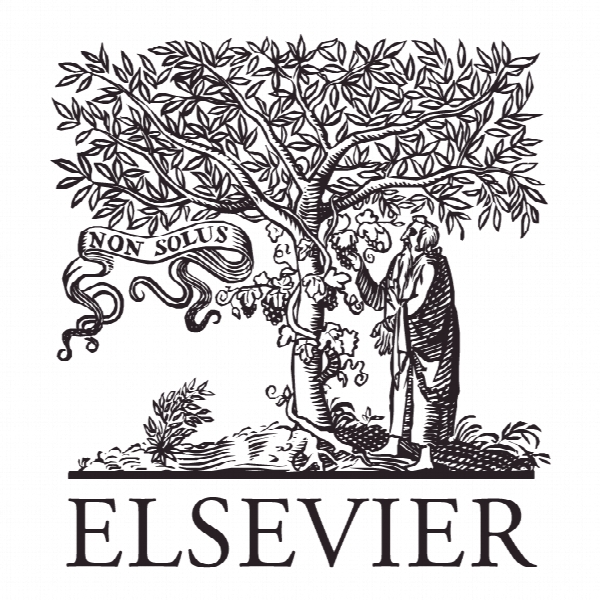تاثیر سیستم های یادگیری الکترونیکی بر تعهد کارکنان The effect of electronic learning systems on the employee’s commitment
- نوع فایل : کتاب
- زبان : انگلیسی
- ناشر : Elsevier
- چاپ و سال / کشور: 2017
توضیحات
رشته های مرتبط مهندسی کامپیوتر و مهندسی فناوری اطلاعات IT
گرایش های مرتبط اینترنت و شبکه های گسترده
مجله بین المللی آموزش مدیریت – The International Journal of Management Education
دانشگاه گروه مدیریت فناوری اطلاعات، میزان، تبریز، ایران
نشریه نشریه الزویر
گرایش های مرتبط اینترنت و شبکه های گسترده
مجله بین المللی آموزش مدیریت – The International Journal of Management Education
دانشگاه گروه مدیریت فناوری اطلاعات، میزان، تبریز، ایران
نشریه نشریه الزویر
Description
1. Introduction The importance of the Internet as an information hub to facilitate data transfer and sharing has increased dramatically in the last decade because of its convenience in accessing both professional services and entertainment (Jafari Navimipour & Sharifi Milani, 2015). Integration of information and communication technology (ICT) into educational environments has made important contributions to learning processes. A key development in the use of ICT in higher education has been the increased use of the Internet and e-mail communications: in some instances, this has led to the adoption of virtual learning environments (Marriott, Marriott & Selwyn, 2004). In a knowledge and information society, e-learning has built on the extensive use of advanced information and communication technologies to deliver learning and instruction (Jafari Navimipour & Zareie, 2015a; 2015b). This technology has accelerated developments in e-learning environments and their individualization (Ozyurt € & Ozyurt, 2015 € ). Prior literature utilized e-learning as an umbrella term to describe teaching and learning activities using the information and communication technologies (Islam, 2016). Also, e-learning as a common use of internet and social networks utilizes electronic communication for learning and teaching from a distance (Zareie & Jafar Navimipour, 2016). Internet learning environment changed the way of people learning (Dahalan, Hassan & Atan, 2012). Elearning is a tool used to transfer the delivery, teaching or programs by means of electronic devices like computer, mobile phone, I-pads, tablets, and etc., as another word the institutions using e-learning courses will enlarge and enhance their combination of offering courses (Venkataraman & Sivakumar, 2015). E-learning is emerging as a popular learning approach utilized by many organizations (Jia, et al. 2011) and it is defined as a broad array of applications and processes that share a common feature of relying on some type of computer technology to promote learning (Bell & Federman, 2013). In addition, it can be defined as a way of learning in which teaching activities uses the Internet and digital contents for effective learning of students (Jafari Navimipour & Zareie, 2015a, 2015b). Recent research in e-learning has highlighted the need to define novel and advanced support mechanism for commercial and academic organizations in order to enhance the skills of employees and students to increase the overall competitiveness in the new economy world (Acampora, Gaeta & Loia, 2011). Also, many organizations believe that employee commitment is a dominant source of competitive advantage and thus, has been drawn to its reported ability to solve intractable organizational challenges such as decreasing turnover rates and increasing productivity (Shuck, Reio & Rocco, 2011). The last two decades have witnessed the phase of transition from ‘satisfied’ employees to ‘committed’ employees who are not predisposed to attrition, rather immersed in the goal and success of their organization and often serve as the force behind organizational success. Employee engagement or employees commitment is often associated with other organization related concepts such as employees satisfaction (Kaliannan & Adjovu, 2015). Employee commitment practice is a broad term used by the human resources of an organization to actualize employee’s performance and their commitment to the vision of the organization. It is believed that engagement is „one step up‟ from commitment; it is clearly in the organization’s interests to understand the drivers of engagement. It can be defined as the level of involvement an employee has towards their organization and its values. An organization’s capacity to manage employee commitment is also reflected in business success (Singh & Shukla, 2012) and it improves company performance. Managers unequivocally agree that this century demands more efficiency and productivity than any other times in history. Employers now realize that by focusing on employee commitment, they can create more efficient and productive workforce (Kompaso & Sridevi, 2010) because employees are the important assets of organizations and play a significant role in their success (Navin, Navimipour, Rahmani & Hosseinzadeh, 2014; Navimipour, 2015; Navimipour, Rahmani, Navin & Hosseinzadeh, 2015a; 2015b). As e-learning has been expanding, however, so have debates about its effectiveness and concerns about its impact on the employee’s commitment. Therefore, this study examines how to improve employee commitment using e-learning and the objectives of this study are as follows: Investigating the usefulness of e-learning for employees and increasing the employees’ commitment; Highlighting the role of electronic learning in organizational success; Improving job performance through e-learning. The paper proceeds as follows. In Section 2, we present the literature review. Section 3 presents the study design and hypothesis. Section 4 is dedicated to the research method. Section 5 presents the findings and discussion. Finally, conclusions are provided in Section 6.


